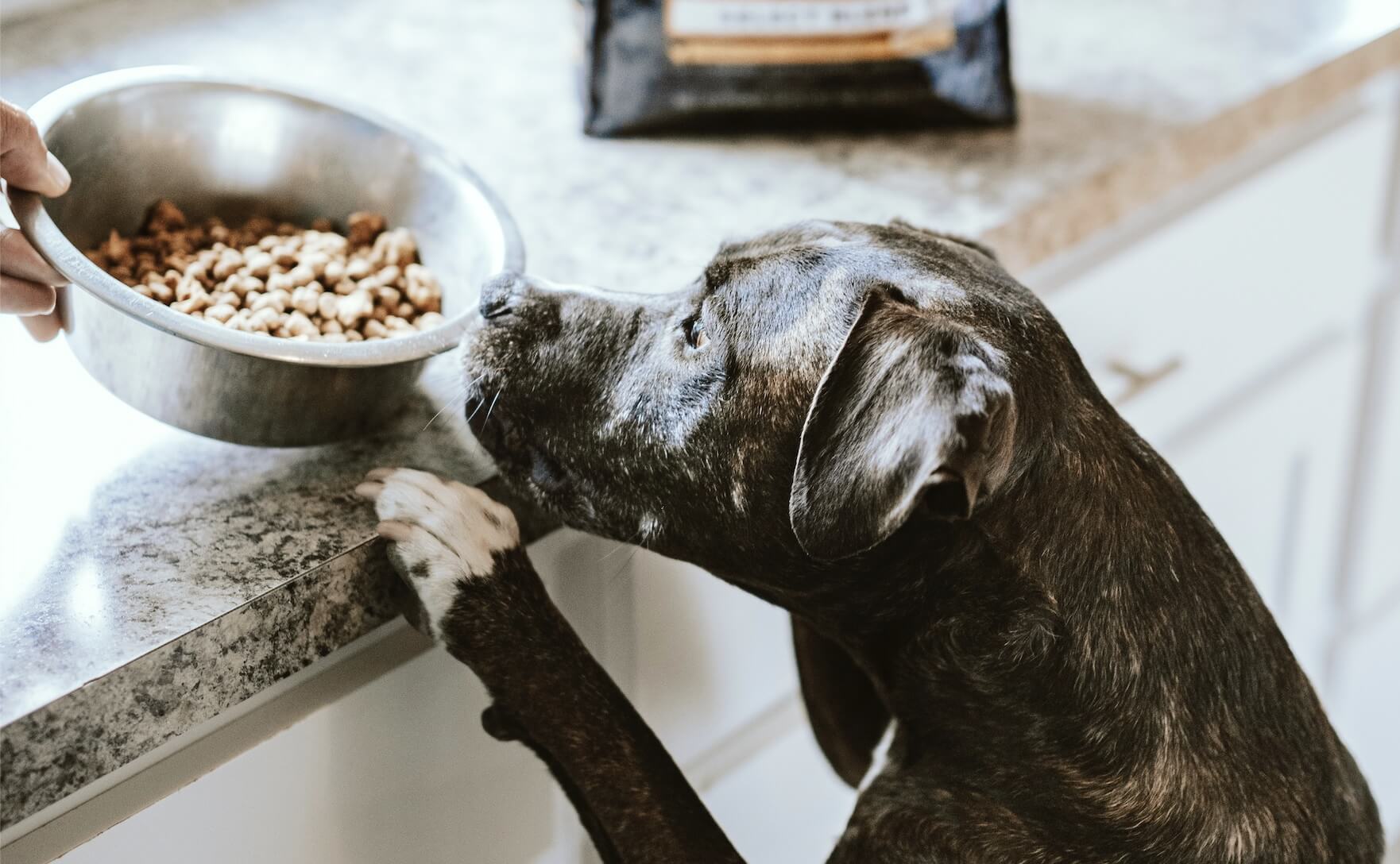Itching, vomiting, and diarrhea are typical indications of feed intolerance. But don’t worry: with the right diet, the cause and symptoms of allergies in dogs can be easily treated. We reveal what hypoallergenic dog food is all about and which ingredients are important when feeding sensitive dog stomachs.
What is Hypoallergenic Dog Food?

Allergies and intolerance to certain foods are widespread not only in humans but also in pets. Affected dogs often suffer from allergic reactions, indigestion, rashes, itching, and general malaise. So-called hypoallergenic dog food provides relief: It is free of typical allergy triggers and contains only particularly easily digestible ingredients.
Typical allergy triggers in dogs
Food allergies in dogs can be triggered by numerous different foods or additives in the food. Dogs can be allergic to individual types of meat as well as to preservatives, grains, or other ingredients in dog food. The allergy can often be traced back to certain protein compounds. Common allergens in dogs are:
- Certain types of meat, especially beef, and chicken;
- Lactose, found in milk and dairy products such as cheese, quark, and yogurt;
- Eggs and protein substitutes;
- Cereals, especially cereals containing gluten such as wheat and spelled;
- Preservatives and colors.
Ingredients of hypoallergenic dog food
In order to increase the digestibility of the food, typical allergens are omitted from the recipes of hypoallergenic dog food. Corresponding types of food are free from artificial preservatives and colorings and contain selected ingredients that are considered to be particularly easily digestible.
Grains and gluten are avoided in hypoallergenic dog food; instead, well-tolerated pseudo-grain varieties such as amaranth, millet, or quinoa are put in the bowl. Hypoallergenic food also often contains exotic, easily digestible types of meat as the only source of protein. These hypoallergenic meats are particularly suitable for allergic dogs:
- Horse meat
- Kangaroo meat
- Ostrich meat
- Buffalo meat
- Camel meat
- Game meat
- Insect protein
Which Dogs are Hypoallergenic Food Suitable For?
Special food is only required by dogs that suffer from a food allergy. It happens that allergies occur as a puppy and the puppy needs special food from birth. In other cases, the allergy is not congenital but develops over time. To find out if your dog is affected, you can follow an elimination diet of hypoallergenic food.
Some dog breeds tend to be more susceptible to food allergies than others, including the Labrador, Golden Retriever, and German Shepherd.
In the case of certain diseases, for example, osteoarthritis, kidney disease, or diabetes, hypoallergenic food can also be useful to slow down the inflammatory processes in the dog’s body. If you suspect a disease or allergy, be sure to contact your veterinarian for comprehensive diagnosis and nutritional advice.
Can You Cook Hypoallergenic Dog Food Yourself?
If you want to prepare the food for your four-legged friend yourself, you should first follow an elimination diet or an exclusion diet. By temporarily avoiding individual foods, you can find out which ingredients or types of meat your dog is sensitive to. You can then adjust the menu accordingly. Choose well-tolerated types of meat as a source of protein and combine the meat with digestible vegetables.
The advantage of a self-cooked diet is that you can optimally control which ingredients end up in your dog’s bowl.
If you are unsure about the composition of the food, seek advice from your veterinarian or use ready-made foods for allergic dogs.
Conclusion: Healthy Ingredients are the Best Therapy
Sensitive dogs sometimes suffer greatly from the symptoms of their intolerance. Switching to hypoallergenic food promises quick and long-term improvement in symptoms. By avoiding allergens and receiving an optimal supply of important nutrients, you can significantly improve your dog’s quality of life through diet alone.
Therefore, always pay attention to typical symptoms and behavioral changes in your fur nose in order to recognize and treat allergies at an early stage. The large selection of hypoallergenic dog food provides variety in the bowl and increases the well-being of your pet in a tasty way.

